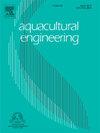Feeding control and water quality monitoring on bioenergetic fish growth modeling: Opportunities and challenges
IF 3.6
2区 农林科学
Q2 AGRICULTURAL ENGINEERING
引用次数: 0
Abstract
Aquaculture systems can benefit from the recent development of advanced control strategies to reduce operating costs and fish loss and increase growth production efficiency, resulting in fish welfare and health. Monitoring the water quality and controlling feeding are fundamental elements of balancing fish productivity and shaping the fish growth process. Currently, most fish-feeding processes are conducted manually in different phases and rely on time-consuming and challenging artificial discrimination. The feeding control approach influences fish growth and breeding through the feed conversion rate; hence, controlling these feeding parameters is crucial for enhancing fish welfare and minimizing general aquaculture costs. In addition to feeding, several important environmental factors, such as temperature, dissolved oxygen, and ammonia, also affect fish health and production. Therefore, there is a critical need to develop control strategies to determine optimal, efficient, and reliable feeding processes and monitor water quality. This paper reviews the main control design techniques for fish growth in aquaculture systems, namely algorithms that optimize the feeding and water quality of a dynamic fish growth process. Specifically, we review model-based control approaches and model-free reinforcement learning strategies to optimize the growth and survival of the fish or track a desired reference live-weight growth trajectory. The model-free framework uses an approximate fish growth dynamic model and does not satisfy constraints. We discuss how model-based approaches can support a reinforcement learning framework to efficiently handle constraint satisfaction and find better trajectories and policies from value-based reinforcement learning.
饲料控制和水质监测在生物能鱼生长模拟中的应用:机遇与挑战
水产养殖系统可以受益于最近发展的先进控制战略,以降低运营成本和鱼类损失,提高生长生产效率,从而改善鱼类福利和健康。监测水质和控制饲料是平衡鱼类生产力和塑造鱼类生长过程的基本要素。目前,大多数鱼类喂养过程都是在不同阶段手动进行的,并且依赖于耗时且具有挑战性的人工识别。投喂控制方法通过饲料转化率影响鱼的生长和繁殖;因此,控制这些饲养参数对于提高鱼类福利和降低一般水产养殖成本至关重要。除了饲料,一些重要的环境因素,如温度、溶解氧和氨,也会影响鱼类的健康和产量。因此,迫切需要制定控制策略,以确定最佳、有效和可靠的喂养过程,并监测水质。本文综述了水产养殖系统中鱼类生长的主要控制设计技术,即优化动态鱼类生长过程的饲喂和水质的算法。具体来说,我们回顾了基于模型的控制方法和无模型强化学习策略,以优化鱼的生长和生存或跟踪所需的参考活重生长轨迹。无模型框架采用近似的鱼类生长动态模型,不满足约束条件。我们讨论了基于模型的方法如何支持强化学习框架,以有效地处理约束满足,并从基于值的强化学习中找到更好的轨迹和策略。
本文章由计算机程序翻译,如有差异,请以英文原文为准。
求助全文
约1分钟内获得全文
求助全文
来源期刊

Aquacultural Engineering
农林科学-农业工程
CiteScore
8.60
自引率
10.00%
发文量
63
审稿时长
>24 weeks
期刊介绍:
Aquacultural Engineering is concerned with the design and development of effective aquacultural systems for marine and freshwater facilities. The journal aims to apply the knowledge gained from basic research which potentially can be translated into commercial operations.
Problems of scale-up and application of research data involve many parameters, both physical and biological, making it difficult to anticipate the interaction between the unit processes and the cultured animals. Aquacultural Engineering aims to develop this bioengineering interface for aquaculture and welcomes contributions in the following areas:
– Engineering and design of aquaculture facilities
– Engineering-based research studies
– Construction experience and techniques
– In-service experience, commissioning, operation
– Materials selection and their uses
– Quantification of biological data and constraints
 求助内容:
求助内容: 应助结果提醒方式:
应助结果提醒方式:


